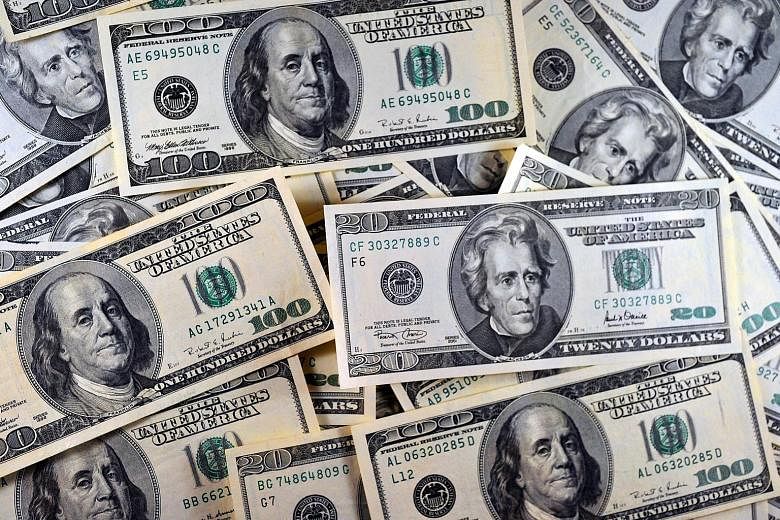By many popular measures, the US dollar has traded sideways for the past six months. Then there is the Federal Reserve's measure.
The greenback is surging, according to an index the Fed created to track the US currency versus those of 26 of the country's biggest trading partners.
It has risen 1.3 per cent beyond a 12-year high reached in March, when the central bank fired the first of a series of warnings that a stronger US dollar may hurt growth and lower inflation.
At a time when the Fed's tightening path has become one of the biggest drivers in the US$5.3 trillion-a- day (S$7.3 trillion) foreign exchange market, the discrepancy between Wall Street's view - largely based on the US dollar's performance against the euro and the yen - and that of policymakers may lead to a jolt for investors expecting recent ranges to persist.
The rapid trade-weighted appreciation this quarter has come mostly against big exporters such as China and Mexico, and it undercuts the Fed's goal of quicker inflation. It may trigger further jawboning from officials looking to cool the dollar's broad gains as the Fed begins raising interest rates for the first time in almost a decade.
"The dollar still continues to strengthen on a trade-weighted basis and the Fed definitely takes that into the equation," said Mr Brad Bechtel, a managing director at Jefferies Group in New York.
"The risk is the Fed starts really emphasising that, and the market would be caught offside."
The Fed's trade-weighted broad dollar index measures the greenback against the units of 26 economies according to the size of bilateral trade. China, Canada and Mexico make up 46 per cent of the gauge.
Meanwhile, most private-sector dollar gauges track a basket of the world's most liquid, widely used currencies. Intercontinental Exchange Inc's US Dollar Index, which serves as the benchmark for various futures and options instruments, has a 58 per cent weight to the euro and 14 per cent for the yen. It lacks representation from any emerging markets, which account for more than half of the US' total trade flow.
The two indexes had moved alongside each other until a month ago. The Fed's broad dollar index surged 3.4 per cent this quarter to a 12-year high as China devalued the yuan to support a slowing economy, while a renewed commodities rout undermined Canada's loonie and the Mexican peso. The ICE dollar gauge fell 0.7 per cent in the same period.
"It's important to be mindful of which dollar measures matter, especially if you're looking at it through the Fed's eyes," Ms Ellen Zentner, chief US economist at Morgan Stanley, said on Bloomberg Radio.
One of the Fed's criteria to raise rates is "a levelling out of the trade- weighted dollar. At the time of the June meeting, they could check off that box. Today, they can't".
US dollar bulls as recently as March were buffeted by unexpected warnings from the central bank.
On March 18, a few days after the Fed index rose to the strongest in more than a decade, Fed chairman Janet Yellen said the US dollar would be a "notable drag" on growth this year. The same day, policymakers lowered their forecasts for the Fed funds rate by almost half. The ICE dollar index dropped 1.2 per cent over the next two weeks.
In the minutes from the Fed's July meeting, released last week, the US dollar was mentioned 12 times, as some officials still saw "downside risks to inflation from the possibility of further dollar appreciation and declines in commodity prices".
The US dollar's surge may restrain inflation and limit the Fed's ability to raise interest rates, said Nomura Holdings. BLOOMBERG

